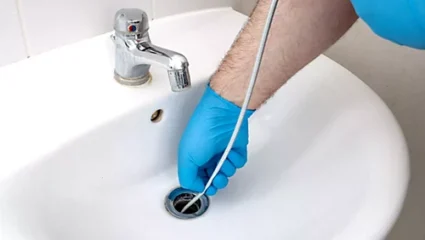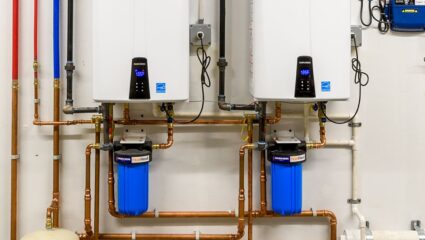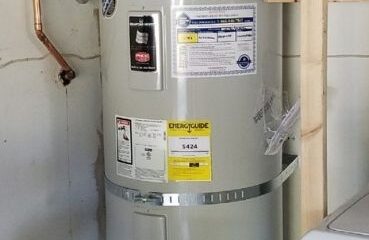Top 10 Plumbing Tips

Our Top 10 Plumbing Tips

Plumbing is just kind of there for most of us. We don’t spend a lot of time thinking about it, or worry about maintaining it. But when it suddenly stops working properly, or we run into a problem, boy do we notice!
1. Don’t Pour Grease or Oil Down the Drain
Have you ever heard people talk about eating food to get a ‘grease coat’, or fill themselves up? The same thing that happens when you eat greasy food happens when you dump grease or oil down the drain.
The grease and oil will build up. You won’t notice it at first – you’ll think it’s totally fine, and that as a liquid, down the sink is where it should go. But little by little that grease and oil will clog your pipes and leave you with some serious plumbing problems.
Think about your pipes before pouring that cooking liquid down the drain, and opt for a safer disposal option. For example, wait for fat to solidify before throwing it in your compost bin.
2. Use A Strainer
Clogs are one of the most common plumbing problems, and when it comes to a shower or sink drain, it can become gross and messy thanks to hair and soap residue.
Avoiding the icky is as simple as using a basket strainer. This will help prevent a time-consuming and unpleasant task in the future.
3. Watch What You Flush
There are certain things that should be flushed and certain things that should definitely not be flushed. We’re pretty sure you catch our meaning.
If you start flushing things other than toilet paper and bodily waste down the toilet, you could cause some serious clogs that we’re betting you really don’t want to deal with. That includes hygiene products, cotton balls, prescription medications, and yes…unfortunate fish.
If you’re noticing that your toilet becomes clogged more and more frequently, there are some additional causes that could be the root of your problem.
4. Know Where Your Main Water Valve Is
Plumbing isn’t one of the things that you actively learn about, but it is important to know where your main water valve is and what to do if there is an issue.
If, knock on wood, you have pipes burst, turning off your main water valve will help minimize the damage until we can get there to help. If you don’t know where it is, you’re going to spend a lot of time scrambling while your home sustains significant water damage.
One of the places you’ll likely find a leak is in your toilet’s flush valve seal. The flush valve seal is what keeps water from flowing from the tank to the bowl of your toilet when it isn’t in flushing mode. Catching a leak in your flush valve seal early requires a simple test: food colouring.
No, you didn’t misread that. All it takes is a couple of drops of food colouring in your toilet tank. Check back in a few hours. If some of the coloured water has found its way into your toilet bowl, that means you have a leak.
6. Make Sure Your Main Sewer Drain Is Accessible
While your plumbing is normally out of sight, it is important that your main sewer drain is always free and clear. This is because in case of a sewage line blockage, we need to be able to move quickly and efficiently.
Your drain access point should be uncovered (that means no rugs or carpeting) and easy to get to – no maze of holiday decorations or old children’s toys to contend with.
Top Tip: Basement flooding is a real problem, particularly if you live in certain areas.
7. Prevent Your Plumbing From Freezing
While not a problem in the summer, once winter rolls around temperatures are going to take a dive. Once they get low enough, your plumbing will have an increased risk of freezing.
One of the best plumbing tips we can give you is to make sure that your always have air circulating through your home, and that is at a minimum temperature of 16 degrees Celsius. You should also insulate as many of the outside wall plumbing lines as possible to avoid potential catastrophes.
If you have a room that gets particularly frigid in the fall, and downright miserable in the winter, don’t wait until then to look into options for better air circulation. Take the warm months to come up with solutions.
Top Tip: Outdoor taps can also lead to frozen pipe problems. Make sure your garden hose valve and the hose itself are completely drained of all water before the first frost.
8. Avoid Chemical Drain Cleaners
Chemical drain cleaners are straight up awful when it comes to the health and wellbeing of your plumbing. People tend to go for them because they are advertised as immediately effective, but they can do more damage in the long run.
If you need something to help rid yourself of a pesky clog, BioOne is a non-caustic, safe drain cleaning option. It uses a natural bacteria that dissolves organic matter, without causing harm to the inside of your pipes.
Once you clear up those clogs, keep them away by using BioOne once a month on every drain in the house.
9. Consider Separate Shut Off Valves on Your Fixtures
Your plumbing is going to need repair eventually; it’s inevitable. No doubt you’re not looking forward to the day when you have to shut all of your water off so someone can come and do the work.
We have a way around that. Installing separate shut off valves on your fixtures will eliminate the all water or no water problem, because you’ll be able to turn off the water to different parts of the house when you need to. That way if you have a problem with your bathroom, you can still use the kitchen sink.
10. Prolong Your Tap’s Life
How many times have we been terrified to hear that drip, drip, drip of the faucet, so we make sure the taps are turned off as tight as they can go?
This is actually bad for your tap’s seal; it wears it out more quickly because of the increased pressure it is experiencing every time it is turned to tight. Think of it like a pencil; the more pressure you put on it, the more worn down it gets.
To avoid this, turn the tap until you feel the natural stopping point; don’t force it closed. Like the pencil, you want to apply the amount of pressure that is just right.
GAC PLUMBING COMPANY 707-538-8000





